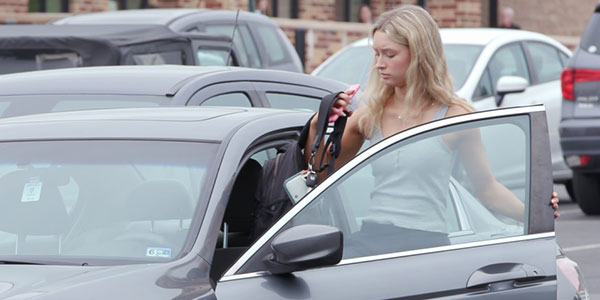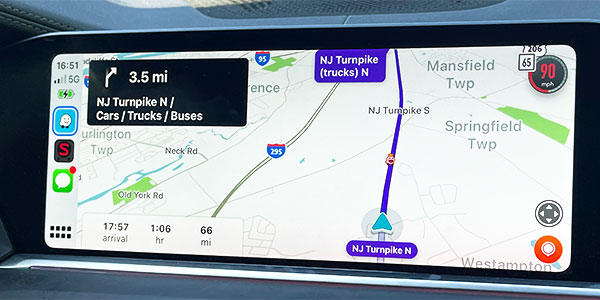A guide for parents of teens
Young driver safety
Learning to drive is an exciting milestone for a teenager, opening up new vistas of independence and adventure. For parents, however, the experience can be more than a little nerve-racking.
Parents are right to be anxious. Teen drivers are about 3 times as likely as drivers 20 and older to die in a crash. Immaturity and inexperience make for a high-risk combination.
But there is a lot you can do to help your child stay safe behind the wheel. Choosing the right vehicle and setting the right ground rules can help ease your anxiety as you hand over the keys — and make a big difference to your teen’s future.
Choosing a vehicle
When it comes to choosing the car your teen will drive, don’t settle for anything too small or too old — and, no matter what your kid promises you, keep them away from anything too fast.
Our list of recommended teen vehicles is a great place to start. Other models may fit the bill if you keep in mind some basic principles.
Choosing a vehicle is perhaps the most consequential decision you’ll make as the parent of a teen driver. It can be tempting to put your kid in a beater that’s older than they are or a cute minicar, but doing so leaves them more vulnerable to serious injury in a crash. Fortunately, there are a range of options between these choices and a brand-new, top-of-the-line SUV.
Your new driver’s first vehicle should have a curb weight of at least 2,750 pounds. That excludes all minicars and some small cars. In a crash with another vehicle, a heavier model will provide greater protection for its occupants.
Avoid sports cars or anything marketed for power, which can tempt teenagers to test the limits. Beware of high-horsepower versions of mainstream models, which make it too easy speed.
Electronic stability control is a must. The technology, which has been required on most passenger vehicles since the 2012 model year, substantially reduces fatal crash risk due to loss of control of the vehicle.
A safe vehicle will have four or five stars from National Highway Traffic Safety Administration (NHTSA) and — for all but the newest vehicles, which should meet our current Top Safety Pick criteria — good ratings in four IIHS crash tests: original moderate overlap, original side, roof strength and head restraints. Ideally, you want a vehicle that also has a good or acceptable rating in the IIHS driver-side small overlap test, which was introduced in 2012.
A very old car won’t meet these criteria, but that doesn’t mean your teen needs the latest model. In fact, you might have a good option sitting in your garage already. But if you’re planning to buy a vehicle for your teen, check out the annual list of recommended used and new vehicles for teens compiled by IIHS with Consumer Reports.
As a rule, the newer the vehicle, the greater the crash protection offered. We continually raise the bar for the Top Safety Pick and Top Safety Pick+ awards, spurring manufacturers to make improvements. If you’re purchasing a new vehicle for a young driver — or a new family car that you expect your teen will drive at some point in the future — make sure it’s a current award winner.
Choosing a newer vehicle will also let you consider headlight performance, which IIHS started evaluating in 2016. Since 2020, Top Safety Pick+ winners are required to have good or acceptable headlights as standard equipment. Nighttime crash rates are substantially lower for vehicles with good or acceptable headlights than for vehicles with poor ones.

INSIGHT
Parents of teen drivers need realistic advice
I helped develop teen driving guidance from IIHS. Now I'm following it with my own kid.
How tech can help
Putting your teen in a newer vehicle will give them access to an array of array of high-tech driver assistance features that were unheard of when previous generations learned to drive. It’s worth it to sort through these technologies, as many of them — including automatic emergency braking, lane departure prevention and blind spot detection — can reduce the risk of a crash.
Some parents are reluctant to introduce advanced driver assistance because they worry their young drivers will become dependent on it. But IIHS research has shown that these features have the potential to save many teen lives.
Teen drivers often have trouble recognizing hazards and staying in control. They’re more prone to losing focus and less likely to lower their speed to compensate for slick roads or poor visibility. Judging following distances and gaps for turning can be challenging with lack of experience.
Because of these factors, crash avoidance features are particularly helpful for teenagers, even though they’re designed for everyone. An IIHS study found that AEB, lane departure prevention and blind spot monitoring could be relevant to about a third of teen driver deaths and a quarter of teen driver injuries.
Such features have become common on new vehicles. AEB that can prevent or mitigate both front-to-rear crashes with other vehicles and crashes with pedestrians is required for the IIHS Top Safety Pick and Top Safety Pick+ awards. Under a voluntary commitment by automakers, almost all new vehicles will be equipped with standard AEB by the 2023 model year. If your teen’s vehicle doesn’t have this technology, an aftermarket collision warning system can provide a safety boost.
Other kinds of technologies can help you set limits and keep an eye on your teenager even when you’re not in the car with them.
Several automakers offer technology suites that include tools to help parents monitor driving and set limits from afar. These include parent-controlled speed limiters and gearshift or sound system interlocks that activate when occupants aren’t buckled. A variety of apps, including some offered by insurers, provide parents with driving report cards or alerts. Such features could prevent or mitigate nearly a third of teen driver injuries and as many as two-thirds of teen driver deaths, IIHS researchers found.
Parents may want to think twice about automated driving features. Systems that control steering or even change lanes automatically are convenient, but they require the driver to stay attentive and ready to take over at a moment’s notice. We don’t know yet how safe they are for young drivers.

INSIGHT
Leveraging smartphones for safety
Smartphones are among the most common causes of distracted driving. Could they also help prevent it?
Laying down the law
As the parent of a teen driver, establishing and enforcing rules is one of your most important jobs. Make sure you know the laws in your state, but don’t hesitate to set stricter limits.
For effective rules, parents can look to decades of research on graduated licensing laws. These laws, which differ from state to state, are designed to ease beginners into driving under conditions that minimize risk.
The strongest laws require a minimum intermediate license age of 17, a minimum permit age of 16, at least 70 required hours of supervised practice driving, and, for the initial period of licensure, a night driving restriction starting at 8 p.m. and a ban on all teen passengers. Each of these restrictions reduces crashes and fatalities, but no single state has all of them.
As a parent, get familiar with the graduated licensing provisions in your state so that you can enforce them. IIHS has compiled a summary of graduated licensing requirements in all 50 states and the District of Columbia.
And consider going further. For example, you don’t have to allow your teen to get their learner’s permit the minute they turn the required age. When they do get their permit, keep a log of the time they spend driving under your supervision, and set a goal at or close to 70 hours even if your state requires far less.
Once they are licensed, set an early curfew, and don’t allow them to drive friends, at least at first. Make sure they know you expect them to obey the speed limit and avoid distractions behind the wheel.
You can experiment with our graduated licensing calculator to get a feel for how stronger rules would reduce your teen’s risk. The calculator was designed to demonstrate the effect of strengthening or weakening specific graduated licensing provisions in each state.
When it comes to cellphones, you can require them to use blocker apps or the “do not disturb while driving” feature that is part of most cell phone operating systems. Many monitoring apps include this feature too.
Setting a good example is key. Even when your kids are young, keep in mind as you drive the around that future teen drivers are watching you.
Once you’ve established the rules for the newly licensed driver in your family, put it in writing. Use this teen driver contract or create your own. Make sure your teen understands the reasons for each of the rules.
After you and your teen sign the document, hang it on the fridge or somewhere where you can both refer to it. Check in every now and then to ensure you are each holding up your end of the bargain. You can revisit it and make modifications as your teen gains experience or new challenges arise.